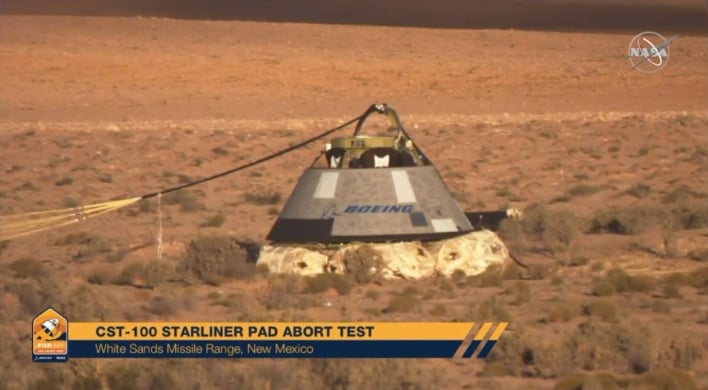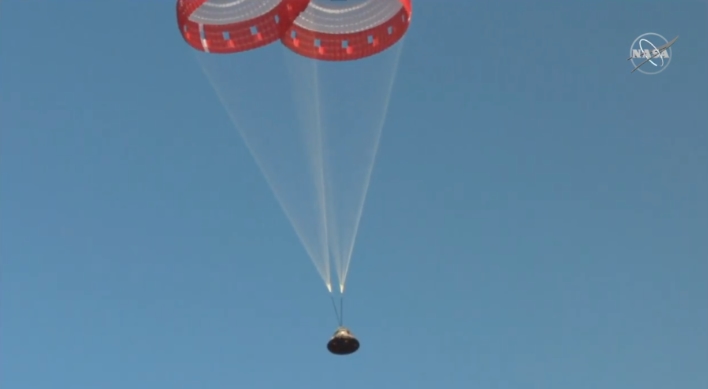Boeing Starliner Spacecraft Completes Crucial Test Of Launch Abort System

Boeing today completed a successful next step in its efforts to complete the certification process of its CST-100 Starliner crew capsule. This morning at 7:15am local time in the New Mexico desert, the Starliner performed a pad abort test launch that saw it blast off to an altitude of roughly one mile, and then safely parachute back to Earth.
The Starliner's engines managed to hurtle the capsule from a standstill to 650 mph in just 5 seconds (eat your heart out, Demon) in an effort to simulate how the capsule would detach from its booster rocket in the event of a catastrophic failure. Once the rocket engines performed their duties, two drag parachutes deployed, followed by three pilot parachutes. This was supposed to be followed up by the deployment of three main parachutes, but only two were functional during today's test. However, according to Boeing, this is well within safety limits for the system.
As it approached the desert floor, the Starliner dropped its heat shield and inflated its airbags to help further cushion the impact. Given that Boeing is still in the testing phase, there were of course no humans aboard the three-seat spacecraft. Instead, there was a dummy laden with test sensors onboard for the quick ride that lasted about a minute and a half from start to finish.

“We’ve tested all these systems individually, so we know the propulsion system fires at the intended levels, and we know the parachutes can support the vehicle and safely slow it down, but the real test is making sure those systems can perform together. That’s when you know these systems are ready to fly people,” explained Boeing’s Pad Abort Test Flight Director Alicia Evans.
Boeing's CST-100 Starliner is scheduled to make its first unmanned flight to the ISS in December, while the first human-crewed mission will occur sometime during 2020.

